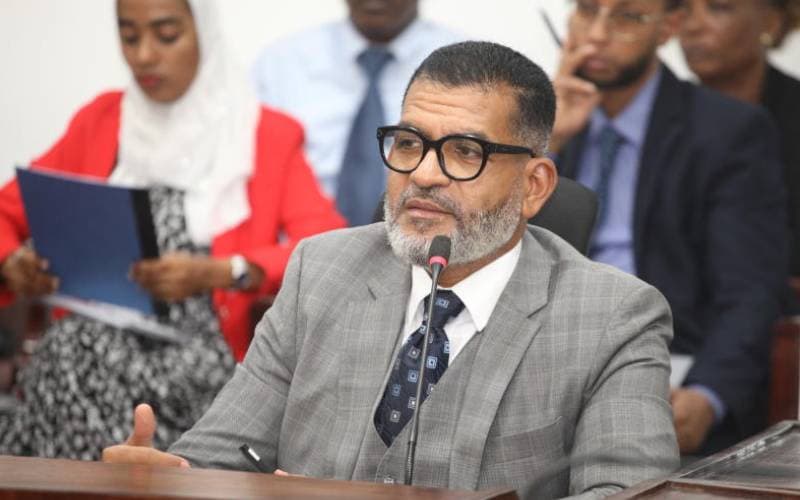We're loading the full news article for you. This includes the article content, images, author information, and related articles.
Mombasa Governor Abdulswamad Nassir asserts ODM has no coalition pact with the government, clarifying its role is one of issue-based cooperation, not a political merger, amidst national debate on the opposition's future.

Mombasa Governor Abdulswamad Sheriff Nassir on Monday, October 27, 2025, emphatically dismissed growing speculation that the Orange Democratic Movement (ODM) has entered into a formal coalition with President William Ruto's Kenya Kwanza administration. Speaking during a televised interview, Nassir clarified that while the party is engaged in a cooperative arrangement with the government, this is strictly limited to a 10-point agenda focused on national interests and does not constitute a political alliance.
“We actually do not have a coalition agreement. We never signed a coalition agreement. We never signed anything else,” Nassir stated during the interview on NTV, seeking to quell rumors of a potential power-sharing deal ahead of the 2027 General Election. His comments arrive at a critical juncture for the opposition party, which is navigating a complex political landscape following the recent passing of its long-time leader, Raila Odinga.
The distinction between cooperation and coalition is central to the current political discourse in Kenya. Following the contentious 2022 elections and subsequent anti-government protests, President Ruto and the then-opposition leader Raila Odinga agreed to bipartisan talks. These culminated in the National Dialogue Committee (NADCO) report, which outlined a framework for cooperation on key national issues. This agreement, often referred to as the basis for a 'broad-based government' arrangement, is the foundation of the current ODM-government relationship.
ODM's leadership has consistently framed this as a pragmatic partnership for the sake of national stability. After a Central Committee meeting on October 27, 2025, the party reaffirmed its commitment to this arrangement until 2027, guided by the 10-point agenda. However, senior party figures like Nassir are keen to draw a clear line. “There's no political party in the world that gets formed for the purpose of being in the opposition,” Nassir remarked, acknowledging the goal of being in government but stressing that the current pact is not a merger.
Nassir's statement underscores the internal deliberations within ODM as it charts its future. The passing of Raila Odinga has created a power vacuum and sparked varied interpretations of his final wishes regarding the partnership with President Ruto. While some leaders like Homa Bay Governor Gladys Wanga have suggested Odinga's last instruction was to work with the government for national unity, others, including Secretary-General Edwin Sifuna, have emphasized the need to preserve the party's distinct identity and prepare independently for the 2027 elections.
This dynamic reflects the broader challenge for the Azimio la Umoja One Kenya Coalition, which ODM anchors. The coalition's future is uncertain, with several member parties having already departed since 2022. The High Court's ruling in February 2025, which declared Azimio the majority party in the National Assembly, further complicates the political alignment, even as Kenya Kwanza leaders dismissed the ruling as having been overtaken by events.
The insistence on maintaining an opposition identity has significant implications for Kenyan governance. A robust opposition is critical for holding the government accountable, scrutinizing legislation, and providing alternative policy proposals. By rejecting a formal coalition, ODM signals its intent to continue performing this constitutional role, even while cooperating on specific, mutually agreed-upon issues stemming from the NADCO report.
This stance is also a clear signal of early posturing for the 2027 General Election. ODM Secretary-General Edwin Sifuna has previously stated the party will field its own presidential candidate. Governor Nassir himself has said ODM will refuse to be in the opposition after the next election, indicating an ambition to either win the presidency outright or form a winning coalition. This delicate balance—cooperating with the current government while preparing to challenge it—is a hallmark of Kenya's fluid political landscape, where alliances are often temporary and pragmatic.
For the East Africa region, Kenya's internal political stability is paramount. As a regional economic powerhouse and a key player in the East African Community (EAC), a predictable and stable political environment in Nairobi is crucial for investor confidence and regional security. The ongoing dialogue between the government and opposition, despite the nuances, is seen as a positive step toward avoiding the political instability that has historically followed contentious election cycles.
Ultimately, Governor Nassir's clarification serves as a crucial reminder of the complex dynamics at play. ODM is attempting to navigate a path that allows it to influence national policy through its agreement with the government, while simultaneously preserving its independence and credibility as the country's primary opposition force, with its eyes firmly set on the 2027 electoral prize.
Keep the conversation in one place—threads here stay linked to the story and in the forums.
Other hot threads
E-sports and Gaming Community in Kenya
Active 6 months ago
Popular Recreational Activities Across Counties
Active 6 months ago
The Role of Technology in Modern Agriculture (AgriTech)
Active 6 months ago
Investing in Youth Sports Development Programs
Active 6 months ago